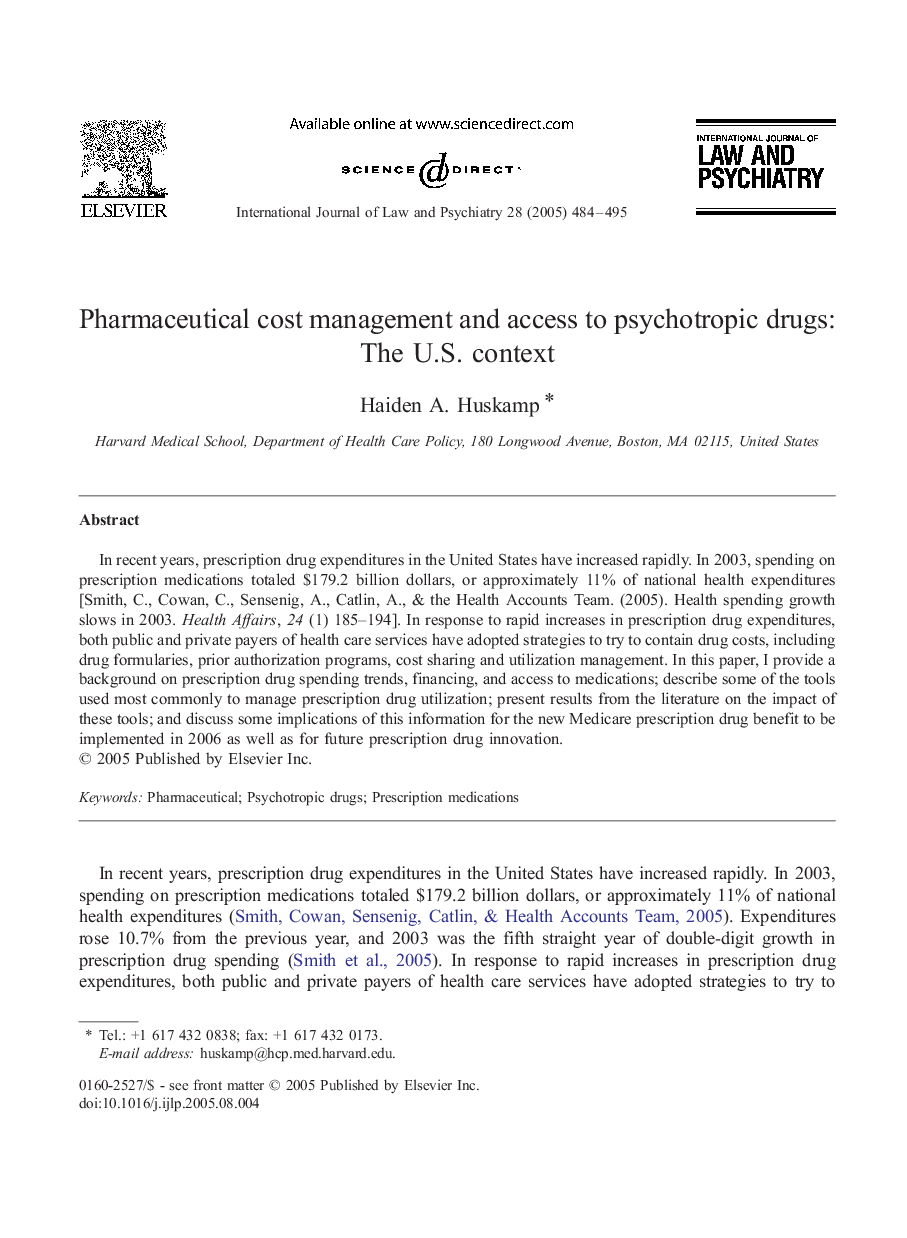| Article ID | Journal | Published Year | Pages | File Type |
|---|---|---|---|---|
| 9623324 | International Journal of Law and Psychiatry | 2005 | 12 Pages |
Abstract
In recent years, prescription drug expenditures in the United States have increased rapidly. In 2003, spending on prescription medications totaled $179.2 billion dollars, or approximately 11% of national health expenditures [Smith, C., Cowan, C., Sensenig, A., Catlin, A., the Health Accounts Team. (2005). Health spending growth slows in 2003. Health Affairs, 24 (1) 185-194]. In response to rapid increases in prescription drug expenditures, both public and private payers of health care services have adopted strategies to try to contain drug costs, including drug formularies, prior authorization programs, cost sharing and utilization management. In this paper, I provide a background on prescription drug spending trends, financing, and access to medications; describe some of the tools used most commonly to manage prescription drug utilization; present results from the literature on the impact of these tools; and discuss some implications of this information for the new Medicare prescription drug benefit to be implemented in 2006 as well as for future prescription drug innovation.
Related Topics
Health Sciences
Medicine and Dentistry
Forensic Medicine
Authors
Haiden A. Huskamp,
